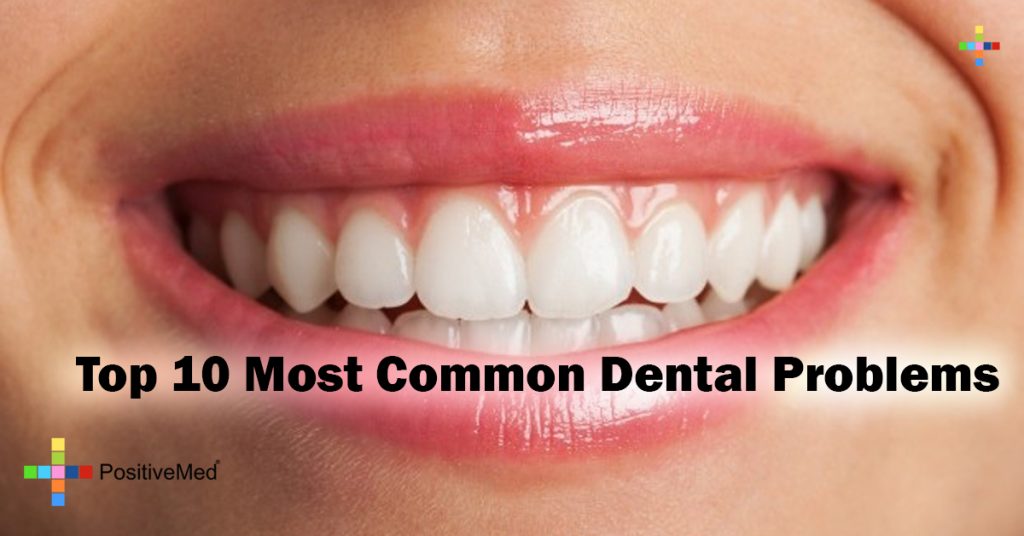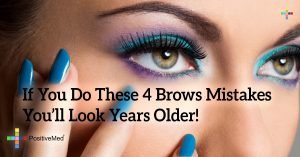
For a relatively small space, your mouth has a whole lot going on, health-wise. As the Mayo Clinic somewhat charmingly puts it, your kisser is teeming with bacteria, most harmless, but left alone they are capable of causing real problems in your overall oral well-being.
Most of us know that the American Dental Association recommends brushing your teeth thoroughly twice a day, and many of us have been begged by our dental hygienists to actually floss. However, not a lot of people know that a morning tongue scraping is a huge part of overall oral health as well. What else can you do and what should you be on the lookout for? Below is a list of 10 of the most common dental problems and (when possible) how to avoid them.
 1- Probably the most obvious one: bad breath. The main source of bad breath (or halitosis) is the tongue. Why? Layers of bacteria can get embedded on it, resulting in foul-smelling Volatile Sulfur Compounds. The Mayo Clinic also lists possible bad-breath causes like dry mouth (which occurs naturally during sleep, but can also be caused by a glandular condition), as well as certain foods, like onions or garlic.
1- Probably the most obvious one: bad breath. The main source of bad breath (or halitosis) is the tongue. Why? Layers of bacteria can get embedded on it, resulting in foul-smelling Volatile Sulfur Compounds. The Mayo Clinic also lists possible bad-breath causes like dry mouth (which occurs naturally during sleep, but can also be caused by a glandular condition), as well as certain foods, like onions or garlic.
Another potential source — one that’s often overlooked — is a post nasal drip, which causes bad breath because bacteria are attracted to the resulting mucus and phlegm. Once again, we cannot stress the importance of a daily tongue scraping enough and antihistamines (after consulting your primary care provider, of course) if a post-nasal drip is your problem. Here are some natural ways to get rid of bad breath .
2- Somewhat less common, but still a prevalent ailment: mouth sores. there are usually two types of these: Canker soresand herpes. Canker sores are non-virus based and caused by everything from stress to a plain old hereditary predilection. Most people let them run their course, which typically takes around 12 days, but chronic sufferers can have them treated with a laser, which is still a relatively new treatment, and takes about 15 minutes. Another treatment for such sores is a twice-daily dose of L-Lysine when there are sores present and reducing it to once-daily when they are dormant. For a list of natural treatments for canker sores click here
.
Canker sores are non-virus based and caused by everything from stress to a plain old hereditary predilection. Most people let them run their course, which typically takes around 12 days, but chronic sufferers can have them treated with a laser, which is still a relatively new treatment, and takes about 15 minutes. Another treatment for such sores is a twice-daily dose of L-Lysine when there are sores present and reducing it to once-daily when they are dormant. For a list of natural treatments for canker sores click here
.
The second type of sore, herpes, is virus-based and contagious (through direct contact, like kissing or sharing things like drinking glasses). According to the NIH, an outbreak typically involves skin lesions around the mouth and lips and small blisters and while there is no cure, oral herpes can be treated with antiviral creams and pills .
3- Cavities. Another one caused by bacteria in the mouth being left alone and given time to cause damage. Said bacteria feast on sugar and starch remnants left on and between our teeth. After they eat these carbohydrates, they secrete an acid waste product. This acid dissolves the tooth enamel. The bacteria then move in and live in the spaces left behind in the teeth, and are more difficult to reach through brushing and flossing.

The key to prevention? Good oral hygiene is your best bet and parents should be particularly mindful, as cavities most often occur in kids. Once a cavity has formed, a dentist can use a crown, filling or — if necessary — a root canal to treat the problem.
4- Gum diseaseis typically caused by three factors: bad oral hygiene, smoking, and genetic susceptibility. According to the NIH, gum disease sufferers don’t often show symptoms until their 30’s and 40’s, though teenagers can often have gingivitis, which is the milder form of the disease.
Periodontitisis the more severe form of gum disease and, according to the Mayo Clinic, can put you at greater risk for heart attack or stroke. How? Bacteria can be inhaled or enter your blood through the gums, eventually affecting your heart and lungs.

Symptoms of gum disease include things like constant bad breath, swollen or bleeding gums, and loose or sensitive teeth. The NIH reports that treatment often includes a deep cleaning or scraping tartar from below the gum line, prescription antibiotics, mouthwashes or gels, and surgery. Diligent at-home care is essential thereafter.
5- Tooth sensitivitycan be a real problem and there can be many causes. Chief among them are exposed root surfaces.
If the gums recede just a little bit — 1 or 2 millimeters — the root of the tooth can become permanently exposed. The root surface is extremely porous and can allow fluids and air to indirectly stimulate the nerve in the center of the tooth.
Other possible causes include exposure to heat or cold, sensitivity to acidity or cracked teeth. The bottom line? If your teeth are causing you real pain, you should go to your dentist to figure out what’s going on.
6. Teeth grindingcan be disastrous for your oral health. Teeth grinding, or Bruxism, is common in adults and is very destructive to the teeth — causing them to become short and blunt, and sometimes resulting in jaw problems.

The most common causes? Misaligned teeth and stress.
Orthodontic or restorative dentistry can correct alignment, and there’s a way for dentists to fabricate a custom a plastic guard for people to wear while they sleep to protect their teeth from the destructive forces our jaws can produce.
The NIH says people can also try things like physical therapy and daily relaxation techniques to both reduce stress overall and to train the muscles of the face and jaw to stay relaxed.
7. Ever wonder why some people have to get their wisdom teethremoved, while others don’t? If you have enough space in your jaw for them, they’ll come in nicely and you can keep them forever. But for some people, there isn’t enough room, which means they’ll only come in, or “erupt” only partially. This is problematic because it can lead to infection. Bacteria are able to enter the soft tissue around the partially-erupted tooth and reside deep in the gums where the tooth is stuck. Eventually, most people will develop an infection in the jaw bone around the wisdom tooth, or in many cases a cyst will form around the impacted wisdom tooth.

Painful, impacted wisdom teeth are usually removed through surgery, though the Mayo Clinic says that some dentists will opt to remove impacted wisdom teeth that aren’t necessarily causing pain, as a means of preventing infection.
8. Tooth erosionisn’t particularly popular, but it does happen. Particularly in people with bulimia, in which case the stomach acids cause tooth enamel to dissolve. If this happens long-term the teeth could completely dissolve all the way to the gum line.
9. Yellow teethis usually cosmetic and generally caused by foods and beverages we consume. Some major culprits? Red wine and coffee . However, some teeth just come in with a yellowish undertone to them, naturally.
The good news is that there are plenty of prescription and over-the-counter options, from laser whitening to drugstore whitening strips to specially blended toothpastes, all of which you can talk to your dentist about. Here is the list of 10 ways to whiten your teeth naturally .
10. Toothachesare kind of the catch-all for oral health problems, and can be caused by just about everything mentioned here — cavities, impacted wisdom teeth, gum disease…
Some things — like a split tooth from an accident, for example — you may not be able to prevent, but in general, your best shot is practicing good oral hygiene and going to your dentist as soon as you suspect a problem to avoid letting it go too long.
In short, if you take care of your mouth, it’ll take care of you. Don’t ignore something simply because you hope it will go away on its own. Ignoring a dental problem will only exacerbate the problem, resulting in rot and, most likely, surgery. If you enjoy contact sports or anything else that may result in head injury, mouth guards are your friends. If you think they look “silly” ask yourself if you’d look sillier wearing a mouthguard or with missing teeth?
Disclaimer: This article is for informative purposes only, and should not be used as a replacement for expert medical advice
Top 10 Most Common Dental Problems
By Khrystyana Kirton
Edited by Stephanie Dawson
Reviewed by Nima Shei MD
SOURCES:
Top Ten Most Common Tooth Problems, List Dose – Top Ten Common Dental Problems, Bennett Family Dentistry – 10 Secrets to Brighter, Whiter Teeth, WebMD – Impacted Wisdom Teeth, Mayo Clinic – Bruxism, MedlinePlus







